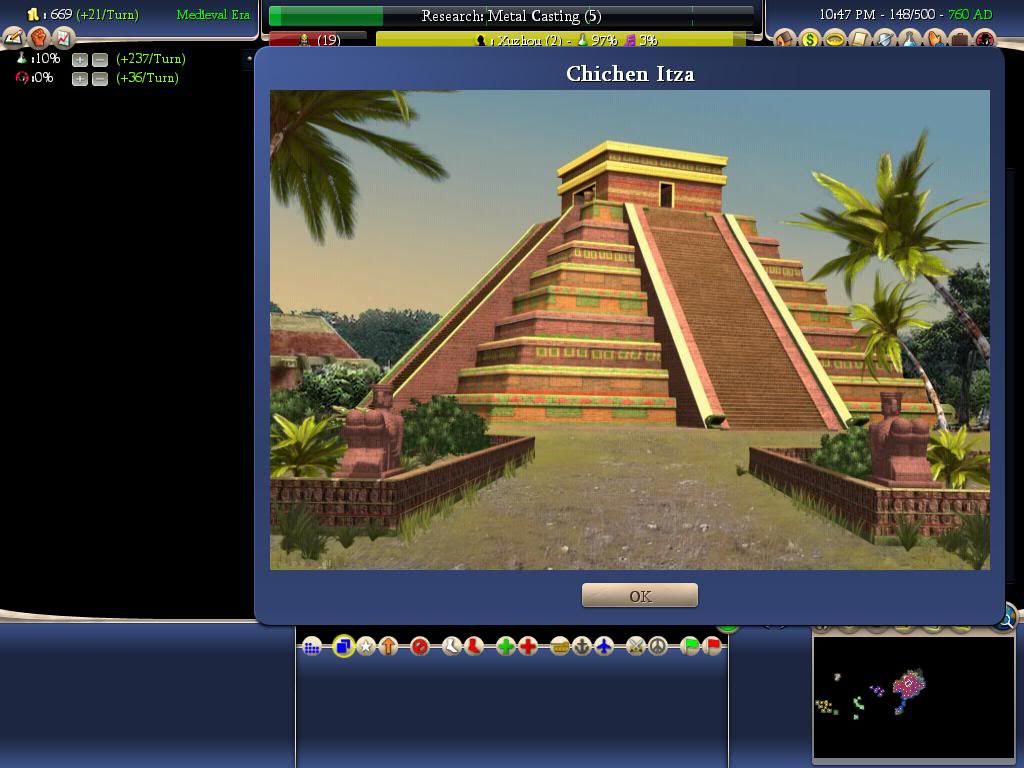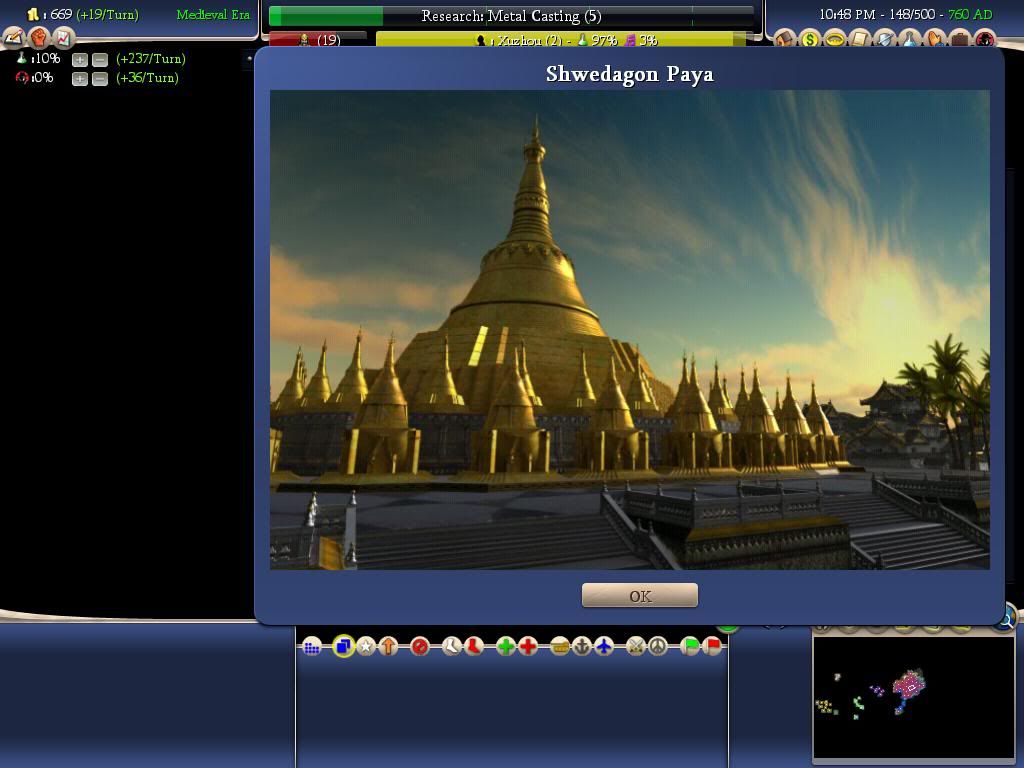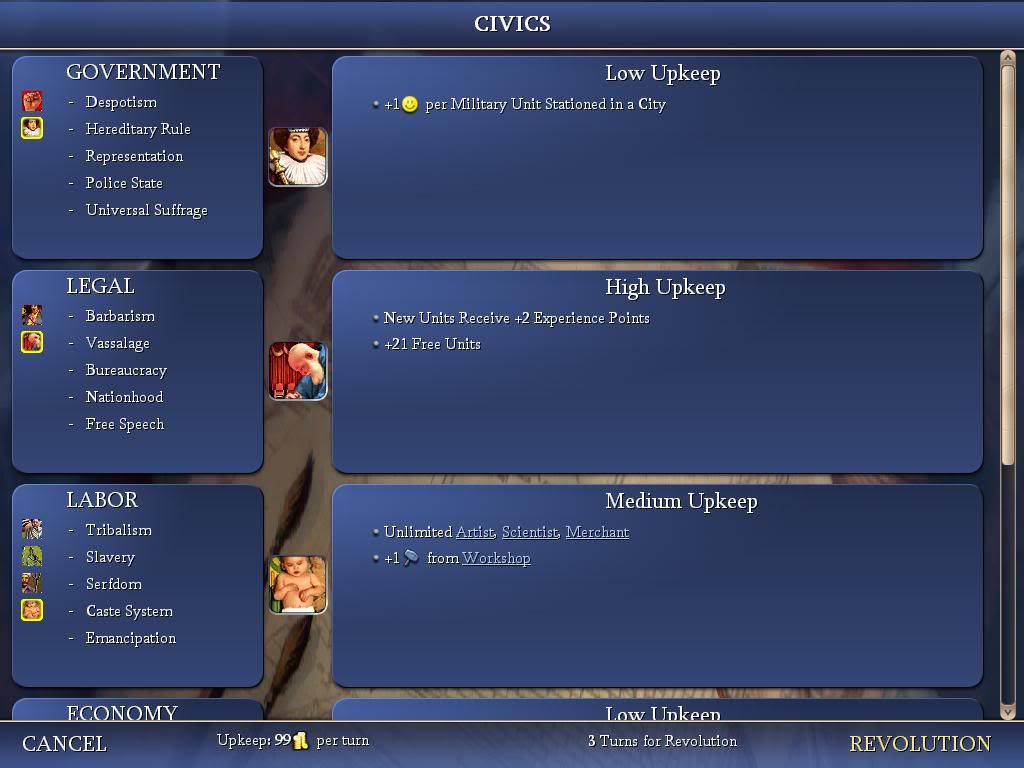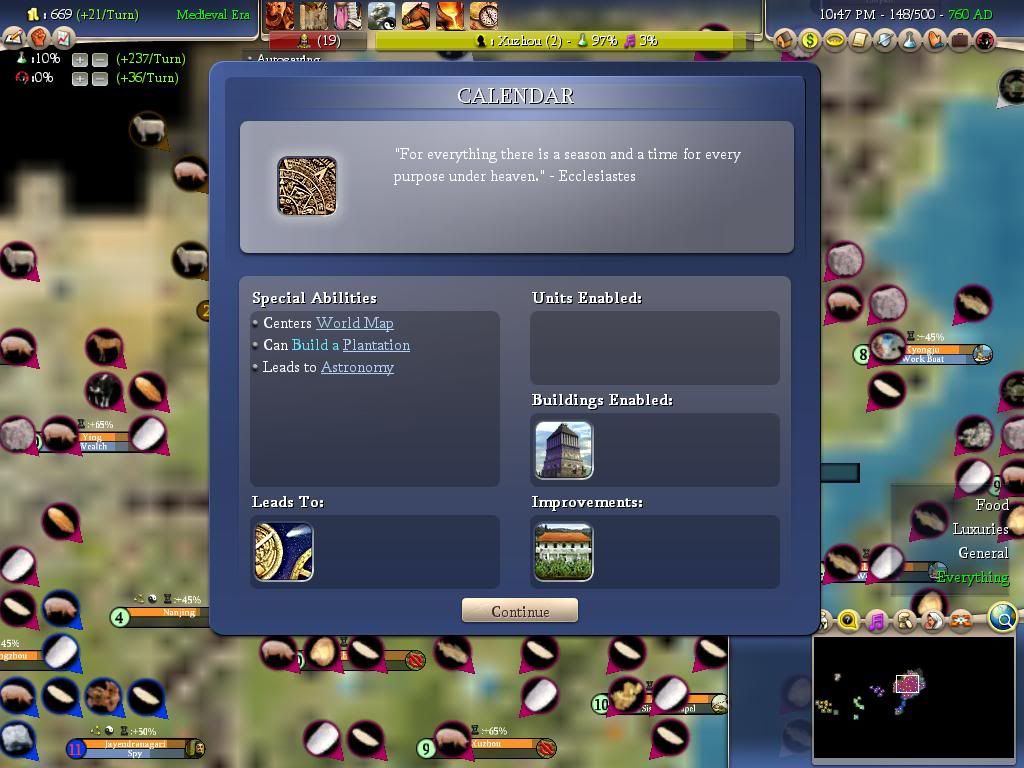wow, i really lost track in this story, once you stopped posting civ screenshots i totally lost track,i mean you took over Japan, vassalized germany and mali, i didn't even know what time you were in.....
and why is Judeism so rampant?
To answer your first statement, you can check the turn/date in the upper-right corner of each game screenshot. That way, you won't lose track.
I am actually including a definitive date for this update but I feel like strictly adhering to the in game date all the time kind of wrecks the creative process.
Duke of Britain answered the question about Judaism already so I hope that was helpful. Anyways, onto the update.
760 AD was a major year landmark year in Chinese history that saw many new developments and societal drifts take place. During this time, it was said that astronomers saw the signs in the heavens and announced that the date would be an auspicious year and blessed with momentous events of a positive nature.
Before the development of the Lunar Calendar, the previous star-based system that had existed had produced many inaccuracies. Peasant pressure on the government to develop a better calendar system in order to assist in crop rotation spurred the accurate Lunar Calendar into existence. It would soon be adopted in the Chinese Empire and its neighboring Taoist states, as well as the Empires extraterritorial zones.

Qi Chen University was founded as a school of architecture by retired Brigadier General Fan Meng Lin. As a soldier who survived twenty years of combat on the Manchurian frontier, he understood that while the best defense was a good offense, fixed fortifications were needed to protect assets rather than borders in a time of changing meta in the ongoing Han-Manchu War. The Empire had adopted an aggressive approach to dealing to with barbarians; seek out their armies and either force surrender or rout them. With the Empires superior weaponry and discipline, this proved to be an effective strategy. However, the Manchus had begun to begrudgingly avoid Imperial forces in direct combat and now favored guerilla action, pushing past the borders with sophisticated objectives like destroying the rich iron mines in northern Chaoxian or kidnapping the children of ministers & bureaucrats. Fan Meng Lin would develop a rapid response system designed to detect incursions into Chaoxian with a series of one or two man towers spread across the province. If a Manchu raiding party were sighted, the guards in the towers would light the beacons, which were in view of multiple other towers that relayed the signal to any of the multiple military camps operating in the area. Fan Meng Lin knew that this was only a stopgap solution and decided upon retirement that if he didnt have the capacity to develop anything more sophisticated, he would help train promising architects to do it in his place. The retired Brigadier General set up the school in the city of Linzi, the foremost port city in the Northeast of Core China. Graduates from the university were eligible for exclusive grants from the government to improve fortifications in cities from across the Empire. In two decades, the whole of the Empire from Kagoshima to Osaka and everything in between was protected by the shining new palisades and gates of Qi Chen University architecture.

The reigning Xia Emperor, Xia Lin II, the first son of Xia Feng & Lan Ye Hua decreed that the draconic state religion laws were no longer in effect. The announcement of the decree did little to affect the already highly secular Chinese citizenry. In actuality, the new law was established to set some guidelines for the new influx of immigrants from the Western Imperial territories that practiced Abrahamic religions and were eager to spread their faith to their new overlords. Any citizen or immigrant was free to practice any religion they pleased on the condition that they were not allowed to spread it through any form of solicitation or suggestion. There was great initial opposition from the new immigrants to these terms but given the fact that in any other country, they might have been stoned them for practicing a different faith, immigrant religious leaders begrudgingly accepted. New offshoots of Judaism and Christianity would become established by second and third generation Arab-Chinese and Pashtun-Chinese based on the principles of non-interference, respect for secularism, co-existence & true personal faith. Shwedagon Paya was founded by the sons & daughters of the first wave of immigrants who settled in Dailiang. Adapting Chinese cultural principles to their mindset, the grand house of worship accommodated a shrine for every known faith in the Empire. The building also doubled as a school of collective theologian thought where religious scholars could cross-examine and peer review scripture and Taoist legends side by side.

Chinese social engineers had begun playing with an experimental system of social organization that aimed to improve on the existing meritocracy system. In the previous-system, the government held Empire-wide exams to determine qualification as a civil servant or scholar. These exams were restricted to the upper class however and reinforced a closed loop of advancement within the social ladder. At a time where the Empire steadily began to import food and textiles from foreign nations, the traditional farming peasant class was transitioning into a burgeoning middle class. Forward thinking bureaucrats and nobles were willing to sacrifice their power to accommodate the rising new force in the Empire and proposed a merit-based system that allowed for lower & middle class involvement. Emperor Xia Lin II approved the social experiment, much to the chagrin of the old guard of aristocrats, who feared it would severely divert resources invested into their own interests and prerogatives. They were in no position to challenge him though. Ever since the reign of the Scarlet Empress, the Empire had already been rapidly becoming increasingly centralized. The lethargic nobles of this generation simply lacked the ability and willpower to protest this.
Under the new caste-based system, Empire-wide aptitude tests would be held every ten years to determine what role an individual would play in society. The aptitude test also doubled as a census record of sorts. Upon being assigned a Caste, bias was given to an individual in occupations pertaining to their Caste.
The Three Castes that were established:
Xin: Individuals whose primary strengths included socialization & artistic talent.
Examples: Writers, Painters, Courtesans, Singers, Musicians
Li: Individuals whose primary value in society was derived from their physical capabilities.
Examples: Soldiers, Farmers, Carpenters, Artisans
Nao: Individuals who have been recognized for great intellectual value or potential belong to this caste.
Examples: Alchemists, Scholars, Architects, Civil Servants
The majority of nobles became classed under the Xin Caste, given a long history of the aristocratic tradition stressing a strict adherence to proper etiquette and an appreciation for fine art. The powerless nobles, incensed, were unable to revolt, as the Armys loyalty was firmly in the hands of the Emperor and the peasants that they oversaw were no less willing to help them as well. The nobility were allowed to keep their titles, but realistically speaking, they had no worth now. As nobles grumbled about being grouped together with common street performers and prostitutes, no one could fathom how much of a boon this turned out to be for them in the far future.

Le Vu was a Kinh defector from the Kampuchean Empire who entered the service of Xia Lin II as a spy. He was tasked with a mission to gauge the strength of all the nations that lay beyond the borders of the Empire. When he returned from his expedition, it was reported that while the Empire was the most powerful nation in the world, her most immediate neighbors, the Indian Republic & the Kampuchean Empire were not too far behind and had comparable capabilities in terms of power projection. The size of the Kampuchean Army in particular, was predicted by Le Vu to surpass Chinese forces in just two decades. As Chinese foreign policy increasingly gravitated towards the myriad aspects and issues that surrounded Sino-Kampuchean relations, this was a worrying development and one that the Emperor would have to keep a close eye on as time went on.
Map from 760 AD showing the extent of the Chinese Empire along with all SAZ (Special Administrative Zones) under Imperial guidance.
A census record dating from 760 AD.












 )
)
























